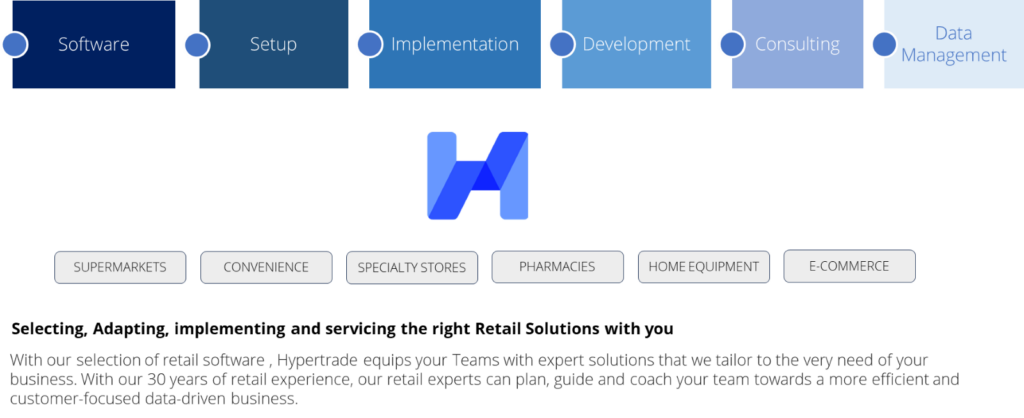How Analyzing Sales Drops Can Uncover Key Pain Points
In the fiercely competitive retail market, every player is compelled to undertake numerous activities, some of which yield positive results while others do not. Conducting regular category or brand review analyses is a standard practice for both retailers and suppliers to gain insights into shopper behavior and their objective is simple: identify the causes and take corrective actions. For the corrective actions to be efficient, they need to address the right root cause
In this article, we review how data patterns help identify the 5 main causes of sales drop so the right corrective actions can be setup and address the right pain effectively

1. Range Change Impact on Sales
Shoppers can switch to other items or switch Retailer stores.
Shoppers visit the stores to purchase the products, so range variety is the most critical factor for Shoppers to choose the stores. When a Retailer deletes the SKUs, what several scenarios can happen:
- Shoppers switch to other products within the same brands
- Shoppers switch to other brands in the same category
- Shoppers switch to other categories
Shoppers Switches to other Retailer Stores
We can reduce the scenario by 2nd and 3rd if we customers well the Shoppers decision tree
Data pattern: How can data help you find out if this is the right scenario
- Sales lost only the deleted items, while other items can be maintained or slightly increased
- Sales dropped in the month of item deletion
- Sales dropped across all channels that were selling the product before
- Sales increase in other stores nearby the stores where the product used to be sold
Corrective Actions:
- Re-negotiate the distribution agreement
- Launch new items
- Increase visibility of remaining top selling items
2. Price Change
Sales significantly dropped across all channels during the month of price increase.
When Brands increase the price, Shoppers behavior’s are often grouped in 5 main types, depending on Brand Loyalty and how important the category for shoppers is.
- Shop the product as normal
- Switch brands for a while and come back later
- Switch brands and never come back
- Stops buying in the category for a while and return to buy that brand later
- Stop buying in this category
Data pattern: How can data help you find out if this is the right scenario
- Sales units per store dropped only in the increased price items.
- Sales units per store start dropping in the month of the price increase.
- Sales units per store dropped across all channels. It might be a different level of decrease, but it should decrease.
- No issue with the Stock and Service level in the month before or that month
Corrective Actions:
- Create a promotion after the price increase
- Ensure the price change are proportionally equal across all channels
- Ensure your price index level is maintained with competitors’ brands
3. Availability
Verify by checking the sales pattern of the store with no stock issue.
When Shoppers face out-of-stock, 4 choices depending on brand loyalty.
- Delay the purchase to the next shopping trip
- Switch products on return to the Brand when it is available again
- Permanently Switch Product or Brand
- Switch to nearby store
Data pattern: How can data help you find out if this is the right scenario.
- Sales will drop only during out-of-stock periods. The time period required for shoppers to go to scenario 3 depends on the Store format: the smaller the format, the shorter the period.
- If the availability challenge happens in Store with a service level greater than 80% in the month before and that month, then the challenge is not availability.
- The substituted items of these products of these items – from that brand or other brands in the range – have a sale uplift
- Market share is decreasing.
Corrective Actions:
- Identify in which stores availability issues are happening to define whether the challenge is localized or global
- Review your service level and setup a common objective with your retailer
- Sharpen your sales forecasts and sales targets by store with your retailer
4. Weak Promotions
Promotion plays an essential role as a retail sales driver. It is also most time-consuming and least profitable activity for both Retailers and Suppliers.
It requires 4 success factors for Shoppers to purchase a promotion item:
- The promo mechanism and product are attractive
- The Shopper can see the promo signage
- Shoppers can find that promo product
- The promo product is available
If one of these factors fails, it might decrease sales due to the promotion in case we performed well last year.
Data pattern: How can data help you find out if this is the right scenario
- Brand Promotion sales value decreases
- The contribution of Promotion sales is dropping
- The number of promotions is dropping
- The sales uplift of promotion items is dropping
- There is no issue with this item’s Stock and Service level in the month before or the month of the promotion
- There is no price increase for that items
- A similar pattern is found across all channels and stores where the product is promoted
Corrective Actions:
- Review the promotion product selection criteria
- Re-Centre your promotion planning approach
- Ensure each promotion objective is jointly decided with your Retailer
5. Distribution Change
From a Shopper’s Perspective, no distribution or out-of-stock has the same impact. It means Shoppers cannot purchase that product in the store at that time.
Therefore the data pattern is similar to availability issues
- Sales will drop only in the period with no product in that store (or out of stock)
- If the delivery mode is direct to stores, the issue might not happen to all stores. In the store with a service level > 80 in the month before and that month, sales should not decrease
- The substituted items of these items should get some positive benefits in the same stores
- This brand might lose market share, especially in the less brand loyalty category
Corrective Actions:
- Ensure the products whose distribution is reduced are not Top selling items
- Ensure all top selling items are distributed in every branch
- Ask your retailer to share its distribution and assortment cluster strategy so you can help and suggest
- Check sales by Branch
If you want to make your next decisions based on such analyses, Hypertrade’s Retail Management Platform enables you to do it automatically across multiple retailers’ dataset.
About the Author
Onuma Patthamakanokporn (nicknamed Bee) is Hypertrade’s Data Director. With a strong retail and data analytics background acquired with Tesco and Dunhumby in Thailand, she helps manufacturers in SouthEast Asia, Middle East and Africa make the most of their data sets to drive continuous and profitable growth.
Get your Sales Diagnostic in one click!

Bee can be joined at onuma.p@hyper-trade.com







